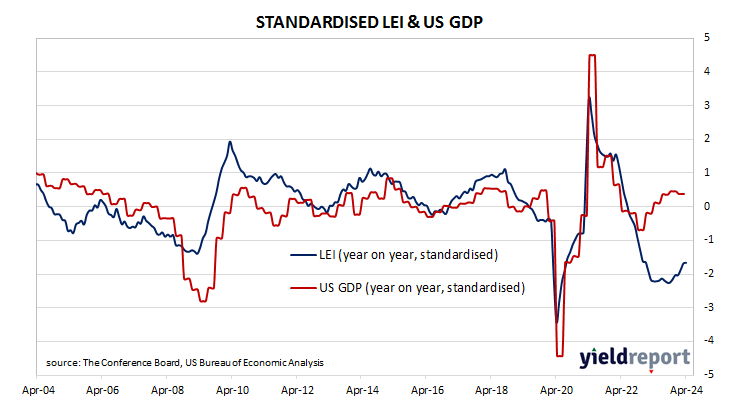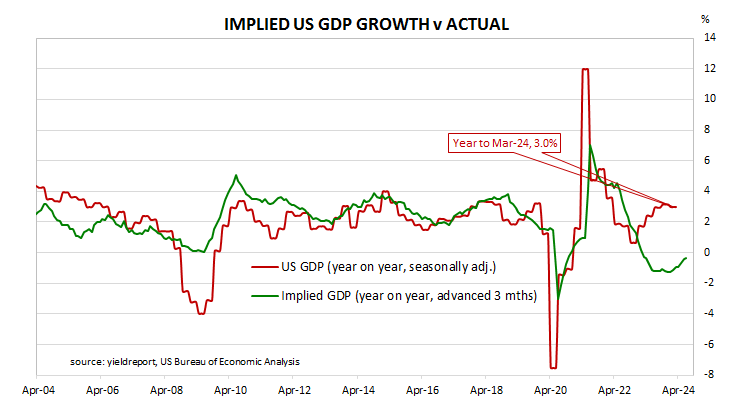Summary: Conference Board leading index down 0.6% in April, worse than expected; change driven by business conditions, weaker new orders, yield spread, drop in new building permits, stock prices; US Treasury yields rise; rate-cut expectations soften; no longer signalling recession, still points to headwinds for growth ahead; regression analysis implies 0.4% contraction in year to July.
The Conference Board Leading Economic Index (LEI) is a composite index composed of ten sub-indices which are thought to be sensitive to changes in the US economy. The Conference Board describes it as an index which attempts to signal growth peaks and troughs; turning points in the index have historically occurred prior to changes in aggregate economic activity. Readings from March and April of 2020 signalled “a deep US recession” while subsequent readings indicated the US economy would recover rapidly. Readings post-2022 implied US GDP growth rates would turn negative but that has not been the case so far.
The latest reading of the LEI indicates it decreased by 0.6% in April. The fall was worse than the 0.3% decline which had been generally expected as well as March’s figure of -0.3%.
“Deterioration in consumers’ outlook on business conditions, weaker new orders, a negative yield spread and a drop in new building permits fuelled April’s decline,” said Justyna Zabinska-La Monica of The Conference Board. “In addition, stock prices contributed negatively for the first time since October of last year.”
US Treasury bond yields rose moderately across the curve on the day. By the close of business, the 2-year Treasury yield had added 3bps to 4.83%, the 10-year yield had gained 4bps to 4.42% while the 30-year yield finished 5bp higher at 4.56%.
In terms of US Fed policy, expectations of a lower federal funds rate in the next 12 months softened, although at least three 25bps cuts are still currently factored in. At the close of business, contracts implied the effective federal funds rate would average 5.32% in June, a touch less than the current spot rate, 5.31% in July and 5.205% in September. May 2025 contracts implied 4.57%, 76bps less than the current rate.
“While the LEI’s six-month and annual growth rates no longer signal a forthcoming recession, they still point to serious headwinds to growth ahead,” added Zabinska-La Monica. “Indeed, elevated inflation, high interest rates, rising household debt, and depleted pandemic savings are all expected to continue weighing on the US economy in 2024. As a result, we project that real GDP growth will slow to under 1% over the Q2 to Q3 2024 period.”
Regression analysis suggests the latest reading implies a -0.4% year-on-year growth rate in July, unchanged from the year to June growth rate after revisions.



